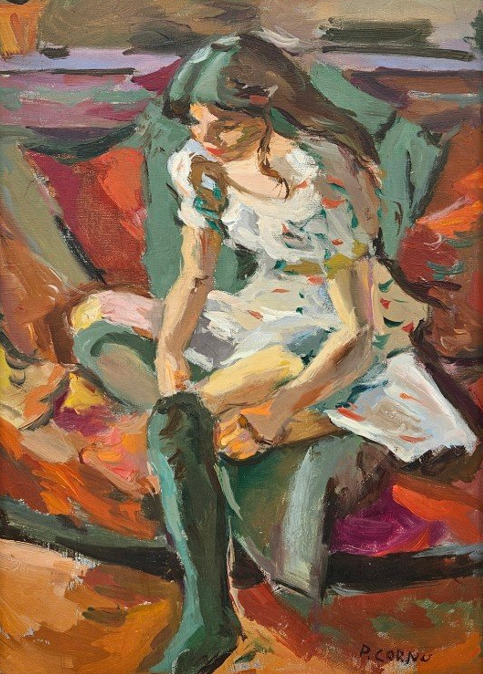#pierre cornu
Explore tagged Tumblr posts
Photo

Pierre Cornu Jeune femme au transat
56 notes
·
View notes
Text
✨ Taking requests for this bingo which is run by my good friend @storiesofsvu ✨

Can also be other characters from the shows I’ve mentioned down below. And other shows, movies, books. I just couldn’t think of anyone else at the moment 😅❤️
#karen speaks#law and order svu#a discovery of witches#kingsman#narcos#mayans mc#sonny carisi#rafael barba#joe velasco#terry bruno#mike duarte#kate silva#kat tamin#grace muncy#toni churlish#jackson neill#paul mendelson#brian kneef#matthew clairmont#baldwin montclair#gallowglass de clermont#pierre cornu#merlin kingsman#colonel carrillo#horacio carrillo#javier peña#miguel galindo#angel reyes#bishop losa
5 notes
·
View notes
Photo

Nude with red stockingsm - Pierre Cornu, n/d.
French, 1895-1996
oil on canvas, 61 x 46 cm (24 x 18.1 in)
139 notes
·
View notes
Text

J'ai toujours aimé les tracteurs ! TRANSISTOR © Pierre Gayte - L'UOMO VOGUE Fashion editor : Caroline Cornu Louis wears Issey Miyake - Marc-Antoine wears Marithé et François Girbaud - Jacky wears Comme des Garçons
0 notes
Text
l'astrologo e l'alchimista
- Le fait est que mes coffres sont vides et que je vais bientôt en être réduit à casser la tire-lire de mon héritier éventuel, ce qui me fait penser que j'aurais peut-être mieux fait de garder l'astrologue. Il m'aurait coûté moins cher et la duchesse eût été contente. - Bah, fit Sthène, tout ce gens-là se valent. - Serais-tu sceptique, mon bon Démo? - Si vous voulez que je vous dise le fin fond de ma pensée, moi, aux horoscopes, je n'y crois pas. - Et moi guère. - A la pierre philosophale non plus. - Ah, dit le duc, si tout autre que toi me disait une chose pareille, je lui morniflerais les ganaches. - Je n'y crois pas, dit Sthène, mais je ne vous empêche pas d'y croire. - J'espère bien! Ah, si tu nous voyais, Timoleo et moi, au milieu des athanors et des aludels, des pélicans et des matras, des cornues et des alambics, manipulant les sels et les métaux, les uns violets, les autres indigo, les uns bleus, les autres verts, les uns jaunes, les autres orangés et certains rouges, sans parler des blancs et des noirs, les observant passer d'une couleur à l'autre, de solides devenir liquides et de liquides devenir solides, de palpables devenir impalpables et d'impalpables devenir palpables, et je ne te parle que de l'aspect le plus superficiel, de nos opérations, alors, mon bon Démo, tu te dirais que ce n'est sûrement pas en vain que ton maître et son alchimiste se donnent tant et tant de mal. Le jour viendra où les anges récompenseront nos oeuvres et ce n'est plus en bronze mais en or massif que je ferai fondre ma statue. - Notre statue. da R. Queneau, Les fleurs bleues
[trad. - Il fatto è che le mie casse sono vuote e presto mi ridurrò a rompere il salvadanaio del mio eventuale erede, il che mi fa pensare che avrei fatto meglio a tenermi l'astrologo. Mi sarebbe costato meno e la duchessa sarebbe stata felice. - Bah, disse Sthène, quei personaggi, uno vale l'altro. - Sei forse scettico, mio buon Démo? - Se proprio volete saperlo, il mio parere personale è che non credo agli oroscopi. - Ed io nemmeno. - E neanche alla pietra filosofale. - Ah, disse il duca, se qualcuno che non sia tu mi dicesse una cosa del genere, lo prenderei a schiaffi. - Non ci credo, disse Sthène, ma non vi impedisco di crederci. - Lo spero proprio! Ah, se potesssi vedere Timoleo e me, tra gli athanor e i vasi ermetici, i pellicani e i matracci, le storte e gli alambicchi, manipolare i sali e i metalli, alcuni violetti, alcuni indaco, alcuni blu, alcuni verdi, alcuni gialli, alcuni arancioni e alcuni rossi, per non parlare dei bianchi e dei neri, guardandoli passare da un colore all'altro, da solidi a liquidi e da liquidi a solidi, da palpabili a impalpabili e da impalpabili a palpabili, e sto parlando solo dell'aspetto più superficiale delle nostre operazioni, allora, mio buon Demo, ti diresti che non è certo invano che il tuo maestro e il suo alchimista si danno tanto da fare. Verrà il giorno in cui gli angeli premieranno le nostre opere, e non sarà più in bronzo ma in oro che farò fondere la mia statua. - La nostra statua. da R. Queneau, I fiori blu]
#citazioni#queneau#raymond queneau#i fiori blu#les fleurs bleues#astrologo#alchimista#duc d'auge#démo#sth��ne#démosthène#statua#statua equestre
1 note
·
View note
Note
Philippe or Baldwin? 😊
You can’t possibly make me choose between them! 😱 they are both my men!
Just look at them:
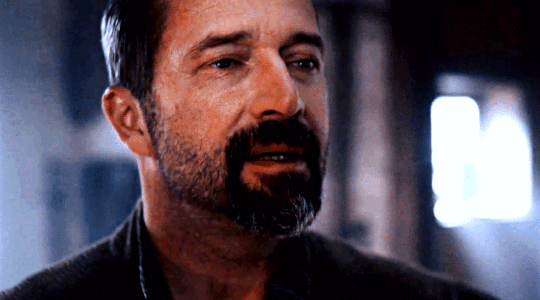

I can’t choose and you can’t make me! 🥰
Bonus:
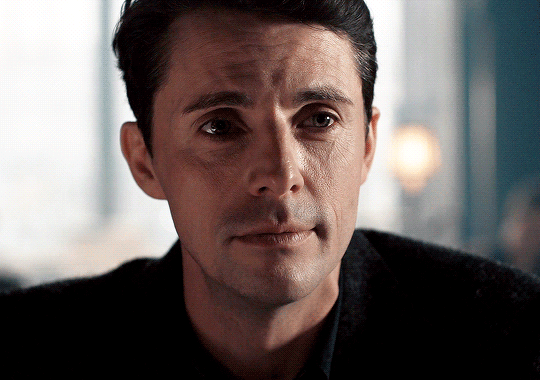
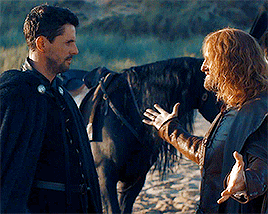

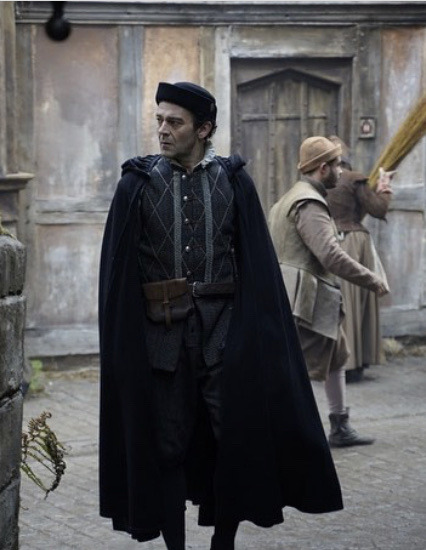


#philippe de clermont#baldwin de clermont#baldwin montclair#matthew de clermont#gallowglass de clermont#pierre cornu#kit marlowe#marcus whitmore#a discovery of witches season 2#a discovery of witches season 1#a discovery of witches#adow season 1#adow season 2#sir walter raleigh#henry percy#duke of northumberland#james purefoy#matthew goode#trystan gravelle#steven cree#edward bluemel#milo twomey#michael lindall#adam sklar#tom hughes
93 notes
·
View notes
Photo

La Lecture 2. Pierre Cornu (French, 1895-1996). Oil on canvas.
Cornu became a pupil of Othon Friesz. He mainly made paintings of still lifes, nudes and landscapes. His style is inspired by impressionism and fauvism.
77 notes
·
View notes
Photo
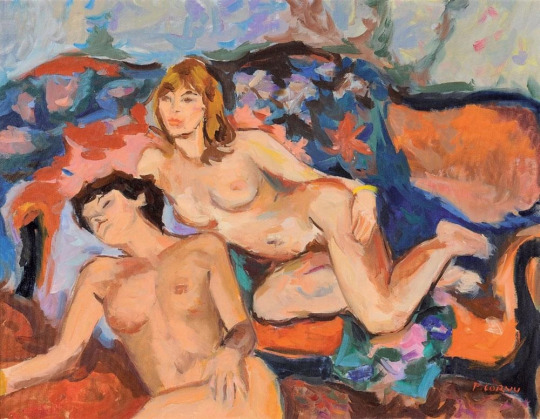
Pierre Cornu Suzanne et Isabelle
75 notes
·
View notes
Photo

Camicia e pantaloni, Thierry Mugler. Scarpe Givenchy
372 notes
·
View notes
Photo

Woman reading - Pierre Cornu
French, 1895-1996
Oil on canvas, 46 x 55 cm.
74 notes
·
View notes
Text
Happy SIN-Day everyone! 💋
Please send me the number AND dialogue ... I'm very forgetful 😅 No ships though, Only doing reader insert at this time ❤️
Characters I'll write for with this:
Rafael Barba (Specify ADA or Defense (I'll also do Judge and Professor)) Sonny Carisi (Specify Detective or ADA) Joe Velasco Hasim Khaldun Mike Duarte Nolan Price Samantha Maroun Grace Muncy Kat Tamin Rita Calhoun Baldwin Montclair (specify if you want Trystan!Baldwin or Peter!Baldwin) Matthew Clairmont (I'll also write him in the past, so specify that) Gallowglass de Clermont Marcus Whitmore Miriam Shepard Jack Blackfriar (GROWNUP -- AKA Toby Regbo) Domenico Michele Pierre Cornu
Smutty One-Liners Part I
“I dreamed of your legs wrapped around my waist.”
“Don’t act innocent when we both know where your mouth was two minutes ago.”
“We should probably leave, before we start a scandal.”
“Stop looking at me like that or my knees will not hold me any longer.”
“I think you lost your underwear somewhere.”
“My tongue still remembers the way you taste.”
“Is there some space left in that bathtub?”
“The way your eyes get darker when you get aroused, is making me lose my mind.”
“I want to count every one of your freckles with my lips.”
“Jealousy seems to be a great motivator for you.”
“Oh no, there is only one bed, what will we do now?”
“I could make you feel better.”
“Get back down here, we’re not done yet.”
“Later you will definitely need to tell me where you learned this.”
“I know I should care about the reason why you’re naked in my bed, but I will just enjoy it for a moment.”
Part II | Part III | Part IV
If you like my blog and want to support me, you can buy me a coffee! 🥰
#karen writes#sin-day writing#law and order svu x reader#rafael barba x reader#sonny carisi x reader#joe velasco x reader#hasim khaldun x reader#mike duarte x reader#nolan price x reader#samantha maroun x reader#grace muncy x reader#kat tamin x reader#rita calhoun x reader#adow x reader#a discovery of witches x reader#baldwin montclair x reader#matthew clairmont x reader#gallowglass de clermont x reader#marcus whitmore x reader#miriam shepard x reader#jack blackfriar x reader#domenico michele x reader#pierre cornu x reader
8K notes
·
View notes
Photo










Fashion Friday
We’re having another French Fashion Friday this week with Galerie des modes et costumes franc̜ais by Roger-Armand Weigert. Published in 1956 by Editions Rombald in Paris, this book depicts various color illustrations of fashionable outfits worn in France between 1778 and 1787.
Each plate is a recreation of plates first commissioned in 1778 by the Parisian merchants Esnault & Rapilly. The first edition of this book was published in 1912 after historian Paul Cornu tracked down as many of the original plates as he could. Many of these original plates were destroyed during the French Revolution, which makes the 1912 edition of this book very valuable.
The plates shown here are designs by Pierre-Thomas Leclère and François-Louis-Joseph Watteau.
-Alex, Special Collections Graduate Intern (Captain)
View more Fashion Friday posts.
#Fashion Friday#fashion#french#dress#costume#Alex#Roger-Armand Weigert#Esnault & Rapilly#Paul Cornu#Pierre-Thomas Leclère#François-Louis-Joseph Watteau
166 notes
·
View notes
Text
Robespierre family timeline
Below is a timeline over the life of Robespierre’s closest relatives between the marriage of his parents up until their deaths because people seemed to drop like flies around him his entire childhood and I felt the need to put some things in order. Most of it is based on information found in La famille de Robespierre et ses origines. Documents inédits sur le séjour des Robespierre à Vaudricourt, Béthune, Harnes, Hénin-Liétard, Carvin et Arras. (1452-1790) (1914) by A. Lavoine, La Jeunesse de Robespierre et la convocation des Etats génétaux en Artois (1870) by J.-A. Paris, Robespierre: a revolutionary life (2010) by Peter McPhee, Robespierre (2014) by Hervé Leuwers, as well as this family tree that I found. If I’m basing something below on anything that’s not in one of these sources, I will include a link to it.
January 2 1758 - The marriage contract between Maximilien Barthélémy François de Robespierre (born 1732, from here on called Maximilien II) [1] and Jacqueline Marguerite Carraut (born 1735) is passed before M. Crépieux and M. Botte, notaries, M. Corroyer, prosecutor, as well as Jacqueline’s mother Marie-Marguerite Carraut (born 1693, née Cornu), father Jacques-François Carraut (born 1701) and younger brother Augustin-Isidore Carraut (born 1737). Maximilien II’s parents Maximilien de Robespierre (born 1694, from now on called Maximilien I) and Marie-Marguerite Françoise de Robespierre (born 1708, née Poiteau) are not present. [2]
January 3 1763 - wedding ceremony between Maximilien II and Jacqueline de Robespierre in the church of Saint-Jean-en-Ronville. Their witnesses are M. Monvoisin, practitioner, M. Corroyer, prosecutor, M. Botte, notary, Jacques-François Carraut and Augustin Carraut.
May 6 1758 - birth of Maximilien Marie Isidore de Robespierre (from here on called Maximilien III). He is baptised in the parish of Sainte-Marie-Madeleine in Arras the same day, with his paternal grandfather standing as godfather and maternal grandmother standing as godmother. [3]
February 5 1760 - birth of Marie Marguerite Charlotte de Robespierre. She is baptisted in the parish of Saint-Étienne in Arras three days later. Her godparents are Gouve Charles-Antoine, King's adviser and prosecutor of the town and city of Arras, subdelegate of the intendant of Flanders and Artois, and Marie-Dominique Poiteau, widow Isambart. [4]
13 January 1761 - marriage between maternal uncle Augustin Isodore Carraut and Catherine Sabine Desplanque (born 1740) in Magnicourt-sur-Canche, Pas-de-Calais. They have five children together, Augustin Louis Joseph (1762), Antoine Philippe (1763 or 1764-1837), Marié Célestine (born 1767 and dead on the same day), Jean-Baptiste Guislain (1768-1797) and Sabine Josephe (1771-1860). [5] The second oldest, Antoine Philippe, will come to play a role in the repression of Arras carried out under Joseph Lebon 1793-1794.
December 28 1761 - Birth of Henriette Eulalie Françoise de Robespierre. She is baptised in the parish of Saint-Étienne in Arras the same day. Her maternal grandfather and paternal grandmother stand as godparents. [6]
April 17 1762 - death of Maximilien I, at the age of 67. He’s buried in the church of Saint-Aubert two days later. The death certificate is signed by his son and Pierre-Grégoire-Marie Enlart, squire, lord of Grandval, adviser to the Provincial Council and Superior of Artois. His widow then retires to the Convent of the Benedictines of the Peace of Arras.
January 21 1763 - birth of Augustin Bon Joseph de Robespierre. He is baptised in the parish of Saint-Étienne in Arras the day after his birth, with his godfather being his maternal uncle Augustin Carraut and godmother the paternal aunt Marie-Marguerite Alexandrine Eléonore Eulalie de Robespierre (born 1736). [7]
July 4 1764 - Jacqueline de Robespierre gives birth to a boy who dies the same day. He is buried in the Saint-Nicaise cemetery, without having received a name. According to Charlotte’s memoirs, Augustin was still with a wetnurse when this happened.
July 16 1764 - death of Jacqueline de Robespierre, a few days before her twenty-ninth birthday. Her funeral is held in the parish of Saint-Aubert the following day. The mortuary act is signed by her brother and Antoine-Henri Galbaut, Knight of Saint-Louis, assistant major of the Citadel. Her husband doesn’t sign it, nor does he attend her funeral. [8]
August 6 1764 - Maximilien II retakes his duties as lawyer at Arras after having spent a few weeks without doing any business. He wins and loses a case that day.
November 16 1764 - the name of Maximilien II ceases to appear on the court register of the Council of Artois.
January 7 1765 - Maximilien II is received as a lawyer at the court of Oisy, about 20 kilometers from Arras, after having been called on by Eustache-Joseph d'Assignies, count of Oisy, to take a prestigious seat there, "on the express condition of taking up residence in said Oisy and not being able to demand from us any sums for fees in criminal cases” eight days earlier. By then, his four children have been dispersed among relatives, Charlotte and Henriette are taken care of by their unmarried paternal aunts Eulalie (born 1735) and Henriette (or are they? [9]), while Maximilien III and Augustin are sent to live with their maternal grandparents. [10] Maximilian II will not retain his functions at Oisy forever however, as the same manuscript which contains his commission also registrates the appointment of his replacement for July 15 1765.
March 13 1765 - Maximilien II is back in Arras (four months before his position at Oisy expires) pleading a case, which carries on all the way into December of the same year. [11]
March 22 1766 - Maximilian II borrows seven hundred livres from his sister Henriette. It would appear he never paid them back, which led to some tension between Henriette, her husband and Maximilien III in 1780. [12]
1766 - Maximilien III is enrolled at the Collège of Arras as a day-student.
October 30 1768 - Maximilien II resigns from any inheritance whatsoever from his mother. [13]
December 30 1768 - Charlotte de Robespierre is enrolled at Maison des Sœurs Manarre, “a pious foundation for poor girls, who may be admitted from the age of nine to eighteen, to be fed, brought up under some good mistress of virtue and to improve oneself in lacing and sewing or in another thing which one will judge useful; to learn to read and write until they are able to serve and earn a living." It is situated just across the border in Tournai (modern-day Belgium). Charlotte is actually a few months too young to actually be enrolled, but an exception seems to be made in her case. According to La famille de Robespierre et ses origines…, it was Charlotte’s godfather Charles-Antoine de Gouve that had enough influence to obtain this favour for her.
September 13 1769 - Maximilien III obtains a scholarship from the abbot of Saint-Vaast to the college of Louis-le-Grand in Paris.
October 13 1769 - Maximilien III is enrolled at Louis-le-Grand.
May 17 1770 - death of Marie-Marguerite Françoise de Robespierre, aged 62. She is buried in the church of Saint-Aubert two days later in the presence of of M. Sébastien-Fidel de Douay, de Baisne, priest, law graduate, and Antoine de Gouve, bourgeois annuitant witnesses. The death certificate is signed by the two latter.
June 8, 1770 - Maximilien II confirms his resignation from the inheritance of his mother, after being informed about her death by his sisters. He is then in Mannheim, Germany. [14]
May 3 1771 - Henriette de Robespierre is sent to join her sister at Maison des Sœurs Manarre, where she stays as a boarder while waiting for a scholarship to become vacant.
October 3 1771 - Maximilien II, back in Arras, affirms he doesn’t want any of his mother’s inheritance yet again. [15]
February 17 1772 - the name of Maximilien II reappears on the court register of the Council of Artois.
June 4 1772 - the name of Maximilien II ceases to appear on the court register of the Council of Artois. There’s no sign of his activities in the town after this.
June 4 1773 - Henriette de Robespierre becomes a scholarship student at Maison des Sœurs Manarre. [16]
June 13 1775 - Death of Marie Marguerite Carraut, aged 83.
January 7 1776 - Marriage between Eulalie de Robespierre and Robert-François Deshorties, merchant and royal notary in Arras. [17]
February 11 1777 - Marrige between Amable Aldegonde Henriette de Robespierre and Gabriel-François Durut, student in Montpellier, doctor of medicine in Arras, doctor at the College d’Oratoire. Their marriage, as well as the one between Eulalie and Deshorties, appears to have been childless, making the Robespierre siblings cousin-less on their father’s side.
November 6 1777 - Maximilien II is buried in Munich, aged 45. His children most likely didn’t find out about his death.
March 14 1778 - death of Jacques François Carraut, aged 77. He’s buried two days later in the parish of Saint-Jean-en-Ronville in Arras. His brewery is sold to his son Augustin for a total of 8242 livres, of which only half goes to the four orphans.
March 5 1780 - Henriette de Robespierre is buried. Her uncle Augustin Carraut and the canon Poulain are the only ones present at her funeral.
May 15 1781 - Maximilien III graduates from Louis-le-Grand and returns to Arras to work as a lawyer. He and Charlotte move into a house on Rue du Saumon.
October 11 1781 - Augustin gains a scholarship to Louis-le-Grand. He begins his studies there on November 3 the same year. All sources I’ve found agree that Augustin was studying at the College of Duoai before getting sent to Paris, but unfortunately none of them mention when exactly he was enrolled there.
Late 1782 - Maximilien II and Charlotte are forced to leave Rue du Saumon when the latter realizes his lawyer salary can’t cover the rent. They instead move in with their aunt Henriette and her husband Durut on Rue Teinturiers, and evantually from there to Rue des Jésuites.
1787 - Maximilien II and Charlotte move to Rue des Rapporteurs 9.
September 30 1787 - Augustin graduates from Louis-le-Grand and moves in with his siblings.
April 17 1791 - death of Amable Aldegonde Henriette de Robespierre in Arras, aged 55.
September 3 1791 - death of Eulalie de Robespierre in Arras, aged 54.
December 6 1792 - death of Robert-François Deshorties in Arras.
November 17 1815 - death of Augustin Carraut in Arras, Pas-de-Calais, aged 78.
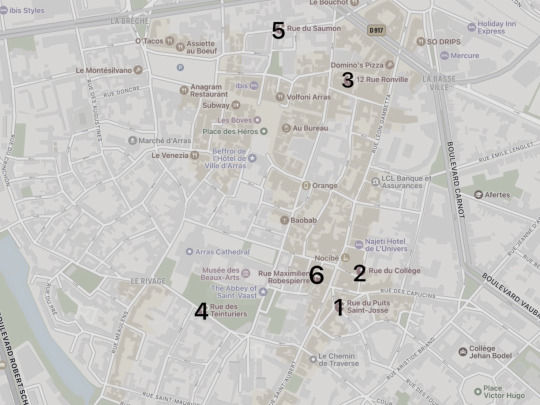
Rue du Puits Saint-Josse, where Maximilien I lived at the time of his death in 1762
Rue des Jésuites (today Rue du Collége) where the Robespierres lived by the time of Augustin’s birth in 1763. The family moved around a lot, in four years it changed residence four times and lived successively in the parishes of St-Géry, Ste-Marie Madeleine, St-Etienne and St-Aubert. Amable-Aldegonde-Henriette de Robespierre’s husband Durut also became tenant of a house on this road in 1783, for an annual rent of 300 livres.
Rue Ronville, where Jacques-François Carraut had his brewery, and where Maximilien III and Augustin moved in 1764.
Rue des Teinturiers, where Amable-Aldegonde-Henriette de Robespierre and her husband Durut lived before 1783. This is likely the place where Henriette de Robespierre passed away in 1780. Maximilien III and Charlotte took up lodgings there in late 1782, after the former realized he could not afford to pay their rent.
Rue du Saumon, where Maximilien III and Charlotte rented a recidence before moving in with their aunt and uncle in 1782. When Maximilien’s income increased, they moved again, to Rue des Jésuites this time.
Rue des Rapporteurs (today Rue Maximilien Robespierre), where Maximilien III and Charlotte moved in 1787. They were soon joined by Augustin.
[1] There is some controversy regarding Robespierre’s father’s actual firstname, since there exists one document describing him as Barthélémy-François, and another one as just Barthélémy (although ironically, it’s more common among authors to call him François and not Barthélémy). Historian Hervé Leuwers still insists that his real firstname seems to be Maximilien, as it’s what his contemporary Abbé Proyart calls him in his La Vie et les Crimes de Robespierre: surnommé le tyran: depuis sa naissance jusqu’au sa mort (1795), as well as the only name indicating his inhumation in 1777.
[2] ”As for the the groom, M. Corroyer, in his capacity, has promised to give him the sum of two thousand livres, either in money or in constituted annuities, as soon as the marriage has been celebrated... As for the the bride, her father and mother have promised to give her a sum of five thousand livres payable, namely: two thousand livres immediately after the celebration of the marriage, one thousand livres one year after said celebration and thus continue on with one thousand livres per year until the final payment of the said sum of five thousand livres. The marriage was celebrated in the presence of Jacques Francois Carraut; Monvoisin, practitioner; Corroyer, attorney; Botte, notary, and Carraut the younger.” Wedding contract from January 2 1758, cited in La Jeunesse de Robespierre…, page 13
[3] ”The sixth of May, 1758 was baptized by me the undersigned Maximilien-Marie-Isidore, born the same day at two o'clock in the morning in the legitimate marriage of M. Maximilien-Barthélemy-François Derobespierre, lawyer at the Council of Artois , and demoiselle Jacqueline Carraut. The godfather was M. Maximilien Derobespierre, grandfather on the paternal side, lawyer at the Council of Artois, and the godmother, demoiselle Marie-Margueritte Cornu, wife of Jacques-François Carraut, grandmother on the maternal side. These have signed. Derobespierre. Marie-Marguerite Cornu. Derobespierre. Lenglade, priest.” Cited in Robespierre et les femmes, d’apres des documents inédits et des pieces inédits (1909) by A. Michel, page 20
[4] ”Today is the eighth day of the month of February, the year 1760. We priests of the parish of Saint-Étienne of towns and Diocese of Arras, have supplemented the ceremonies of the baptism for a girl born around half past two in the afternoon in said parish in the legitimite marriage of maître Maximilien-Barthélemy-François de Robespierre, lawyer at the Provincial Council of Artois, and of demoiselle Jacqueline-Margueritte Carraut, her father and mother; she was delivered by us parish priest the day after her birth, six of the same month and year as above, with the permission of the bishopric dated the same day signed by Le Roux, vicar general, and below, by ordinance Péchena. The godfather was master Charles-Antoine de Gouve, adviser to the King and his attorney for the town and city of Arras, subdelegate of the intendant of Flanders and Artois, in the department of Arras, of the parish of Saint-Jean in Ronville, and the godmother demoiselle Marie-Dominique Poiteau, widow of Sieur François Isambart, procurator to the said provincial council of Artois, of the parish of Saint-Aubert, who gave her the name Marie-Marguerite-Charlotte, and who signed with us the parish priest, and the father here present, the same act on the day and year mentioned above. The child was born on the fifth. Marie Dominique Poiteau De Gouve Derobespibrre Willart, parish priest of Saint-Etienne.” Cited in Ibid, page 323-324
[5] I had a hard time finding any reliable info regarding dates of birth (and death) for Robespierre’s five cousins. I found one article from 1991 about them as well as one on WikiTree, however, the two give different dates of birth for some of the children.
[6] “Today, the twenty-eighth day of the month of December, 1761, we priests of the parish of Saint-Étienne, of the town and diocese of Arras, have baptized a girl born on the same day in this parish of Saint-Étienne around six o'clock in the morning in the legitimate marriage of Maître Maximilien-Barthélemy-François de Robespierre, lawyer at the Provincial Council of Artois, and demoiselle Jacqueline-Marguerite Carrant, her father and mother our parishioners. The godfather was sieur Jacques-François Carraut, wholesale merchant brewer of the parish of Saint-Jean en Ronville, maternal grandfather to the child and the godmother demoiselle Marie-Marguerite-Françoise Poiteau, wife of master Maximilien de Robespierre, lawyer at said Provincial and Superior Council of Artois, of the parish of Saint-Aubert, paternal grandfather to said child, who gave her the name Henriette-Eulalie-Françoise and who signed with us parish priest, the same act as well as the father here present at said Arras on the aforesaid day, month and year. Jacque (sic) François Carraut Poiteau de Robespierre Derobespierre Willart, curé de Saint-Eteinne” Cited in Robespierre et les femmes… (1909), page 326-327
[7] ”Today, the twenty-second day of the month of January of the year 1763, we priest of the parish of Saint-Étienne des Villes and diocese of Arras have baptized a boy born the day before, about two o'clock in the afternoon, the twenty-first of the same month and year, on this said parish in the legitimate marriage of master Maximilien-Barthélemy-François de Robespierre, lawyer at the Provincial Council of Artois and demoiselle Jacqueline-Margueritte Carraut, his father and mother our parishioners. The godfather was Augustin-Isidore Carraut, merchant of the parish of Saint-Jean en Ronville, maternal uncle of the child, and the godmother demoiselle Margueritte-Alexandrine-Éleonore-Eulalie de Robespierre of the parish of Saint-Aubert, paternal aunt of said child, who gave him the name Augustin-Bon-Joseph and who signed the same act with us as priest as well as the father here present on the days, months and year mentioned above. Carraut Eulalie de Robespierre Derobespierre Willart, curé de Saint-Eteinne” Cited in Ibid, page 327-328
[8] ”Demoiselle Marguerite-Jacqueline Carraut, aged twenty-nine or thereabouts, wife of M. Maximilien-Barthélemy-François Derobespierre, lawyer at the Provincial and Superior Council of Artois, died on the sixteenth of July in the year 1764; the service was held on the seventeenth, followed by her burial in this church, those present were the sieurs Antoine-Henry-Galhaut, knight of the royal and military order of Saint-Louis, aide-major by patent of the citadel of Arras, and Auguste-Isidore Carraut, brother of the deceased, who signed with us as parish priest. Galhaut. De Lacroix, priest Carraut.” Cited in Ibid, page 323-324
[9] According to La famille de Robespierre et ses origines. Documents inédits sur le séjour des Robespierre à Vaudricourt, Béthune, Harnes, Hénin-Liétard, Carvin et Arras. (1452-1790) the paternal aunts Eulalie and Henriette retired to Convent of the Benedictines of the Peace of Arras with their mother when the latter was widowed in 1762, where they would not have been able to provide for their nieces. The article instead implies all four children were taken in by their maternal grandparents, which it also uses to explain why Charlotte was enrolled at Maison des Sœurs Manarre despite being a few months too young to actually be admitted, and why Henriette was enrolled without having a scholarship — their grandparents simply had to quickly send them away since they couldn’t provide for all children. However, it doesn’t cite a source for the aunts’ alleged move, and both Leuwers and McPhee list the article as one of their sources while still writing Charlotte and Henriette went to live with their aunts, so I’m not sure about this.
[10] In his biography, Peter McPhee claims Maximilien III was also looked after by two maternal aunts. However, I’ve not managed to track down any information whatsoever on these, and the few Carraut family trees I’ve found only mention Jacqueline, Augustin and a third brother named Jean-Baptiste who probably died young since more or less no info exists regarding him. Worth noting is also that Mcphee says the maternal aunts were called Eulalie and Henriette, which were the names of the paternal aunts as well… This confusion is most likely a result of poor choice of wording by Abbé Proyart in his La Vie et les Crimes de Robespierre: surnommé le tyran: depuis sa naissance jusqu’au sa mort (1795) — ”Not being heir to any patrimony, he (Robespierre) had no resources for his subsistence except those which could be procured for him by the honest brawler Carreau (sic), his grandfather, and the charity of good people, which were quite efficiently encouraged by two aunts of the same name, who lived in a great reputation for piety.” Proyart most likely means the aunts were of the same name as Robespierre and not his grandfather, which is supported by the fact that he then claims one of them married a doctor, just like Eulalie de Robespierre did.
[11] On December 9 the same year, Maximilien II wrote a a letter to his fellow lawyer Maximilien Baudelot, in which he identified himself as a lawyer of Arras while trying to get them to all come together and publicy plead for the betterment of the the dauphin, who died eleven days later. This confirms he was still active in Arras at this point.
[12] ”Hearing of April 4, 1780: M. Corne, for François-Gabriel Durut, doctor of medicine, and Amélie-Aldegonde-Henriette Derobespierre, his wife; Against François-Maximilien-Barthelemy de Robespierre; Gentlemen give default against François-Maximilien Robespierre and for the benefit, hold the signature affixed by the defaulting party at the bottom of a recognition of March 22 1766 which it is about for recognized; Consequently, we condemn said defaulting party to pay to the parties of the attorney Corne, for one part, the sum of seven hundred and eleven livres ten sols, centenary in said recognition, and for another part, the sum of one hundred livres paid in his acquittal to the notary Husson, for pension provided to him according to the receipt of March 14, 1772 and in question, in the interest of the sums quoted from the day of the judicial demand and at the costs, liquidated at fifteen livres eighteen sols eight denarii.” Cited in Mémoires de l’Académie des sciences, lettres et arts d’Arras, series 11, volume 3, page 56-57.
[13] ”I, the undersigned, lawyer at the Provincial Council of Artois, renounce, for the benefit of my sisters, my rights and shares in the movable and immovable estates of my mother, acknowledging that I have received from said mother beyond the share that I could claim, both for me and for my children. Written at Arras, the thirtieth day of October, 1768 (Signed): DEROBESPIERRE” Cited in La famille de Robespierre et ses origines. Documents inédits sur le séjour des Robespierre à Vaudricourt, Béthune, Harnes, Hénin-Liétard, Carvin et Arras. (1452-1790)
[14] ”I, the undersigned, lawyer at the Provincial Council of Artois, hereby renounce for the benefit of my sisters all rights and shares in the movable and immovable estates of my late mother, acknowledging that I have received from said mother beyond the share that I could claim, both for me and for my children. Written at Mannheim, June 8, 1770” Cited in Ibid
[15] ”Before the undersigned royal notaries of Artois appeared M. Maximilien-Barthélemy-François de Robespierre, lawyer at the Superior Council of Arras, residing in said Arras. Who recognized that, by an act made under his private signature, in the city of Mannheim, on the eighth day of June 1770, he declared that he renounced the movable and immovable successions of lady Marie-Marguerite-Françoise Poiteau, his mother, at the time of her death widow of M. Maximilien de Robespierre, lawyer at the Council of Artois. But, having since considered that this renunciation could not have its effect, considering that at that time, he did not have full and complete knowledge of the forces of said succession and that, since his return to this town, three months ago, he has taken perfect knowledge of said estates by inspecting the letters and papers abandoned by said mother, which Marie-Marguerite-Alexandrine-Eléonore-Eulalie and Amable-Aldegonde-Henriette de Robespierre, his sisters, represented and entrusted to him. This is why said sieur appearing has, hereby, declared to renounce said successions and to claim nothing hereunder, giving power to the bearer of the bulk hereof to reiterate where and to whom it will belong. And just now said ladies Marie-Marguerite-Alexandre-Eléonore-Eulalie and Aimable-Aldegonde-Henriette de Robespierre have appered; these have recognized that said sieur de Robespierre, their brother, has given them the titles and papers mentioned herein. Passed in Arras, the third of October, 1771. (Signed): de ROBESPIERRE; de ROBESPIERRE, the older; de ROBESPIERRE, the younger, (and as notaries): MERCHIER, HUSSON. Cited in Ibid
[16] “To Messeigneurs, Messeigneurs the Treasurer-General, Councilors and Clerks of the Estates and Finances of H. M. the Dowager Empress and Apostolic Queen of Hungary, Bohemia, etc. Begs in very deep respect Henriette-Josephe de Robespierre, native of the town of Arras, ten years old, saying that, in the hope of being received in the foundation of the demoiselles Manarre, in the town of Tournay, like her sister was, she would have boarded there from the month of May 1771 and remained there until now, and done all the duties to which are held those provided with this foundation to the satisfaction of the superiors. However, although there is a place which must be vacant towards the month of July this year, the Administrators of it are having difficulty in receiving it, obsanting certain regulations by which it would be said that there would only be the subjects of your Sacred Majesty who would be admitted there; but, as it does not present itself up to now, and that that which must leave there is also a foreign subject who was received there; she takes the very respectful liberty of addressing Your illustrious Lordships, My Lords, for your pleasure, taking favorable account of the pension expenses which she has paid since said day, May 3, 1771, and of the useful and advantageous qualities which she possesses for the good of the house, permit the Administrators to there receive the supplicant with the ordinary charges. It's grace... , etc.” Cited in La Jeunesse de Robespierre, page 19
[17] Deshorties was the widower of Marie-Jeanne Langlet, with who he had two sons and three daughers. According to Charlotte, Maximilien III had been courting one of these daughters, Anaïs, for two to three years at the time of the Estates General, and there were marriage plans between the two.These were however broken up by the revolution and Anaïs instead got engaged to another lawyer, Léandre Leducq, who she married on August 7 1792. Another one of the children was Régis Deshorties, who kept up contacts with the Robespierres during the revolution. Here is a letter from him to Augustin written on July 18 1794.
#maximilen robespierre#robespierre#augustin robespierre#charlotte robespierre#henriette robespierre#frev
23 notes
·
View notes


